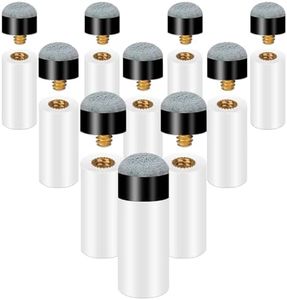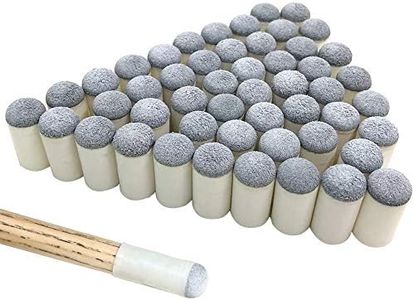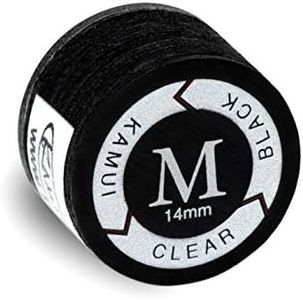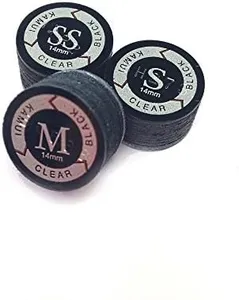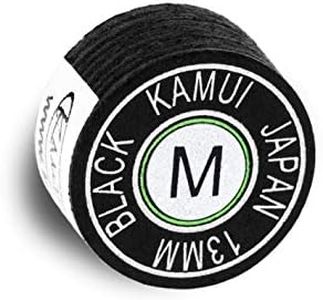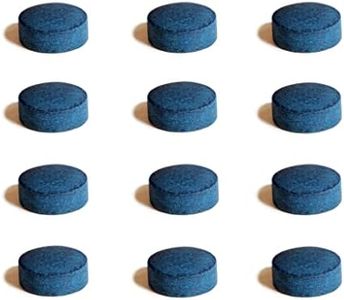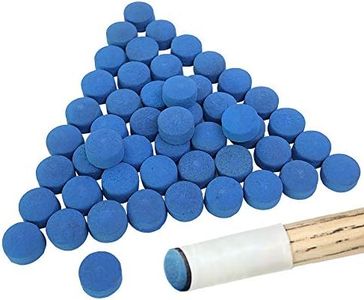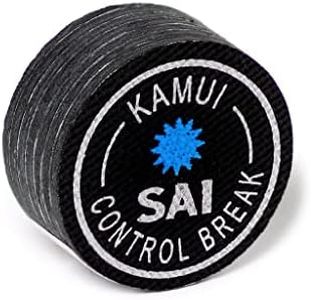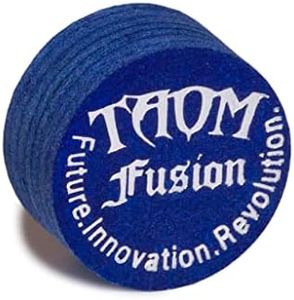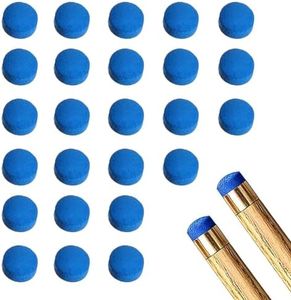We Use CookiesWe use cookies to enhance the security, performance,
functionality and for analytical and promotional activities. By continuing to browse this site you
are agreeing to our privacy policy
10 Best Pool Cue Tips
From leading brands and best sellers available on the web.Buying Guide for the Best Pool Cue Tips
Choosing the right pool cue tip is an important step for any billiards player, whether you're a beginner or more advanced. The tip plays a huge role in how much control you have over the cue ball, your ability to apply spin, and even how the cue 'feels' when you shoot. Since your cue tip is your main point of contact with the ball, understanding its properties will help you find a tip that matches your playing style and needs.Tip HardnessTip hardness refers to how soft or hard the cue tip is, and it greatly impacts control and feel when striking the cue ball. Softer tips grip the cue ball more, making it easier to add spin and control the ball, but they can wear down and lose shape faster. Medium tips offer a good balance between spin potential and durability, suitable for most players. Hard tips, on the other hand, last longer and transfer more power, ideal for breaking or players who prefer a firmer feel, but they can be less forgiving when applying spin. To choose the right hardness, think about your playing style: if you focus on finesse and spin, a softer tip could be better; for consistency and power, a harder tip might suit you.
Tip DiameterThe diameter of a pool cue tip refers to its width, usually measured in millimeters. A smaller diameter tip (about 11-12mm) allows for greater spin and precision on the cue ball, but it can be less forgiving, requiring more accuracy from the player. Larger diameter tips (around 13mm or more) are more suitable for beginners, as they make it easier to hit the cue ball consistently and are good for straight shots. When selecting tip diameter, consider your experience and what type of shots you prefer: advanced players aiming for spin and trick shots may prefer thinner tips, while newer players or those who focus on standard play might benefit from thicker tips.
Tip MaterialCue tips are made from various materials, with leather being the most common, but layered tips and synthetic options also exist. Single-layered leather tips offer a traditional feel and are often softer, whereas multi-layered tips are generally more consistent in texture and last longer. Synthetic tips are designed for high durability, often used for breaking cues. Your choice depends on what you value more: leather for more feedback and feel, layered for consistency and longevity, or synthetic for maximum toughness, especially if you break a lot.
Shape/RadiusThe shape or curvature of the tip—sometimes called the radius—affects contact with the cue ball and is described as 'flat' or with shapes like 'nickel' (more curved) or 'dime' (very curved). A more rounded tip (dime shape) makes it easier to apply side spin, while a flatter tip provides a bigger hitting surface, which can be more forgiving. Most players find the nickel radius to be a good compromise. When picking a shape, think about whether precise spin or consistent straight shots are more important for your style.
Tip HeightTip height is how tall or thick the tip is from its base to its top. Taller tips tend to last longer because you can trim and reshape them multiple times as they wear down, but they may compress or change feel over time. Shorter tips might feel firmer and more direct from the start, but need replacing sooner. If you are diligent about cue maintenance, a taller tip offers more flexibility; otherwise, a standard or shorter tip can be simpler to manage.
